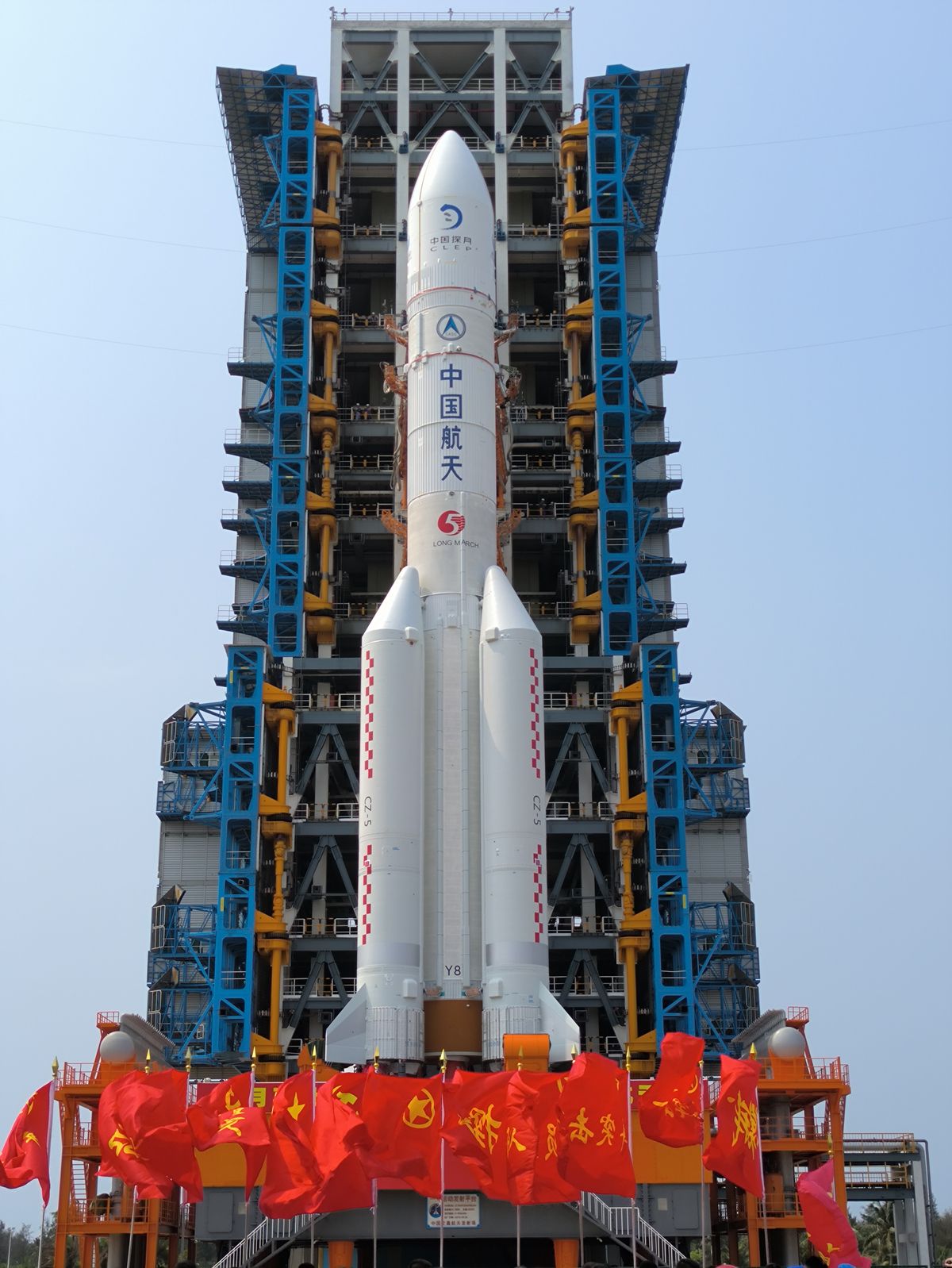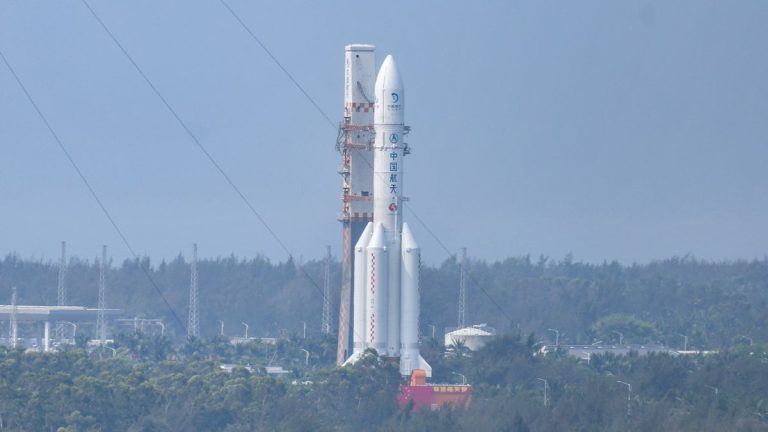Chang’e 6: China’s Historic Mission to the Moon’s Far Side
Key Takeaway
China is launching its Chang’e 6 mission on Friday, May 3, 2024, to collect and return lunar samples from the far side of the moon. This is the first ever mission to retrieve samples from the moon’s far side and could provide valuable insights into the moon’s geological history.
Summary
- China’s Chang’e 6 mission is scheduled to launch between 5:17 a.m. and 6:18 a.m. ET on Friday, May 3, 2024.
- The mission will be carried out by a Long March 5 rocket and will involve four parts: a lunar orbiter, a lander, an ascent vehicle, and a reentry module.
- The mission aims to collect up to 4.4 pounds (2 kilograms) of lunar material from a large impact crater on the far side of the moon called Apollo basin.
- The samples will be returned to Earth and studied by scientists, potentially revealing information about the moon’s early history and geological evolution.
- The mission is considered complex and a significant advancement in China’s space program.
- To support the Chang’e 6 mission, China launched the Queqiao-2 satellite in March 2024 to serve as a communication relay for the mission.
The Complete Story
China’s ambitious lunar exploration program is about to take a giant leap forward with the launch of the Chang’e 6 mission. Scheduled for liftoff on May 3rd, 2024, Chang’e 6 will attempt something no space agency has ever done before: collect and return samples from the far side of the moon. This mission marks a significant milestone in space exploration and could revolutionize our understanding of the moon’s history.
A Technological Feat: Unveiling the Mysteries of the Lunar Far Side
The far side of the moon, permanently facing away from Earth, remains shrouded in mystery. Unlike the well-mapped near side, the lunar far side has a unique geological composition, potentially holding clues to the moon’s formation and evolution. However, collecting samples from this region presents a significant technological challenge.
Chang’e 6 will be a complex mission involving a four-part spacecraft. A Long March 5 rocket will carry the craft, consisting of a lunar orbiter, a lander, an ascent vehicle, and a reentry module. After reaching lunar orbit, the lander will detach and touch down on the Apollo basin, a massive impact crater on the far side. Here, the lander will drill into the lunar surface and collect up to 2 kilograms of precious lunar material.
The collected samples will then be transferred to the ascent vehicle, which will blast off from the moon’s surface and dock with the waiting orbiter. The orbiter will then begin its journey back to Earth, carrying the reentry module containing the lunar samples. Upon reentry into Earth’s atmosphere, the reentry module will detach and parachute to a designated landing site in China, where the samples will be retrieved and meticulously studied by scientists.

A Stepping Stone to the Future: Unveiling the Moon’s Secrets
The samples returned by Chang’e 6 promise to be a treasure trove of information. By analyzing their composition, scientists can gain insights into the moon’s geological makeup, early bombardment history, and potential volcanic activity. It could also help us understand the formation of the Earth-Moon system and provide clues about the existence of resources on the moon.
The success of Chang’e 6 would be a major achievement for China’s space program, solidifying their position as a leading player in lunar exploration. This mission paves the way for future crewed missions and the establishment of a permanent lunar base.
Beyond the National Race: A Collaborative Effort for Space Exploration
While the Chang’e 6 mission represents a significant step forward for China’s space program, it should also be seen as a positive development for international space exploration. The moon holds immense scientific and potentially economic value, and collaboration among space agencies will be crucial to unlocking its secrets. Sharing data and expertise will allow us to move forward in a more efficient and cost-effective way.
The Chang’e 6 mission signifies a new era of lunar exploration, and the entire world will be watching with anticipation. The potential scientific discoveries and technological advancements hold the promise of furthering our understanding of our place in the universe. This mission is a testament to human ingenuity and our unwavering desire to explore the unknown.
HASHTAGS:
#Changethe6 #LunarExploration #MoonMission #SpaceScience #ChinaSpaceProgram #SpaceCollaboration #FarSideoftheMoon #NewSpaceAge #ScientificDiscovery #UnlockingtheMoon’sSecrets

